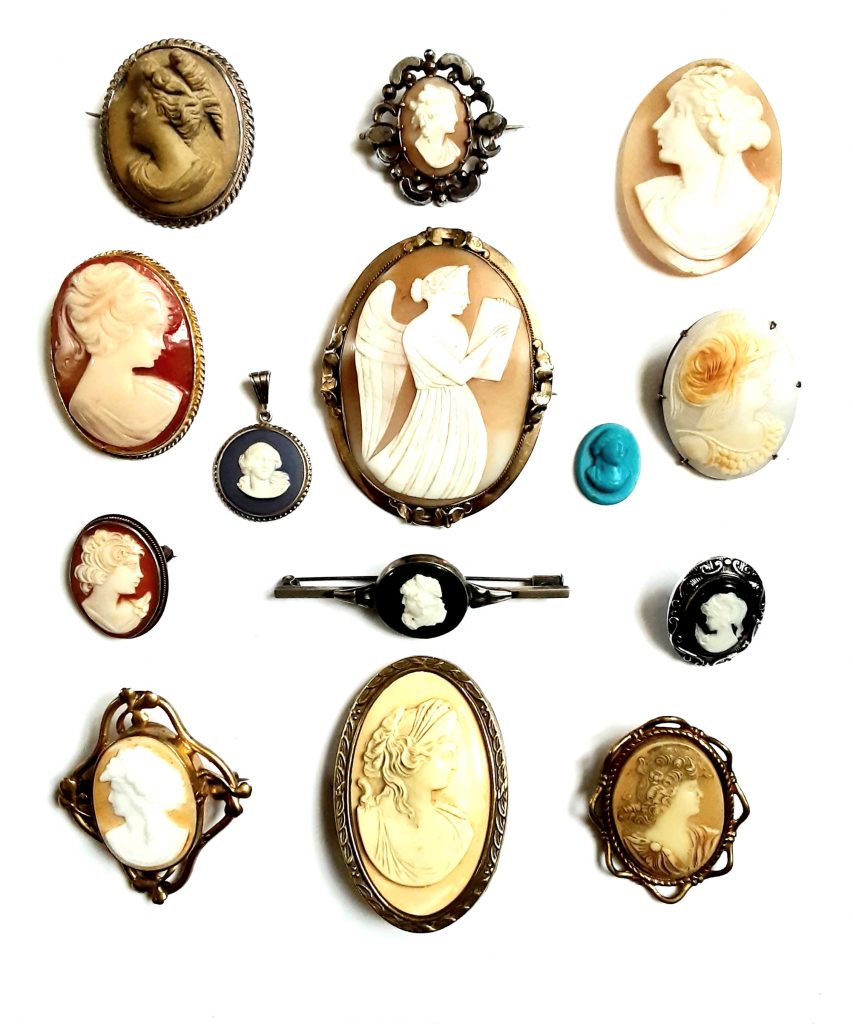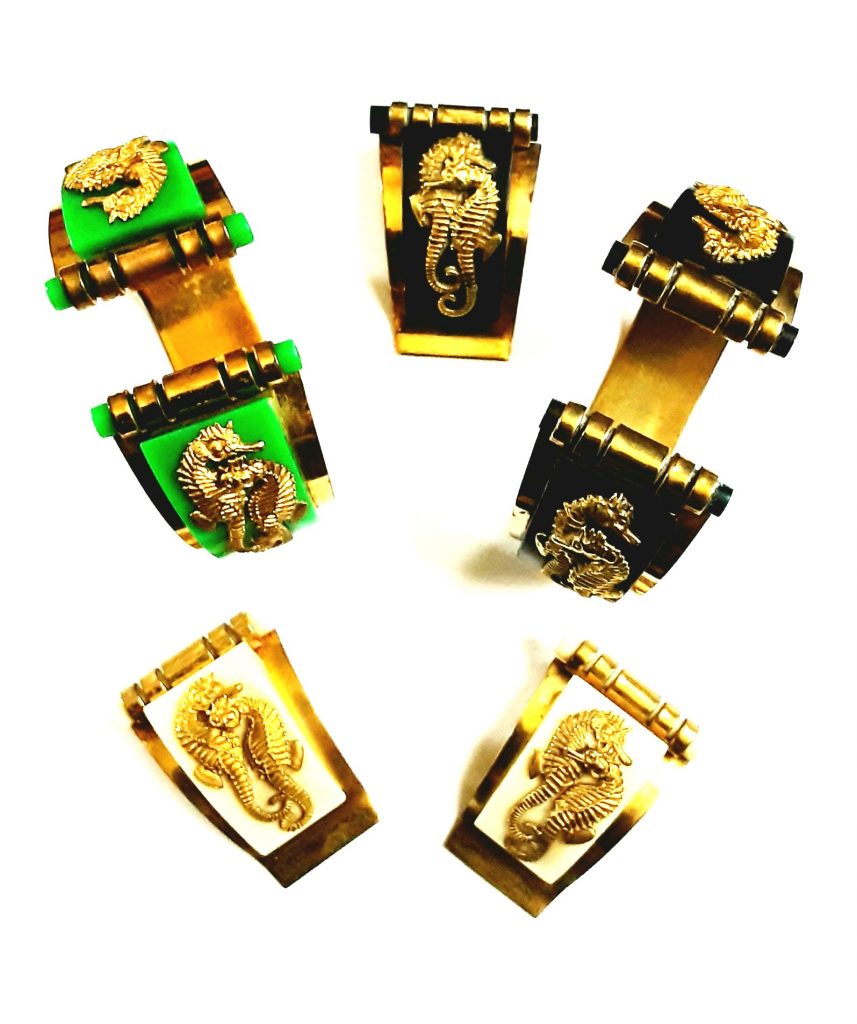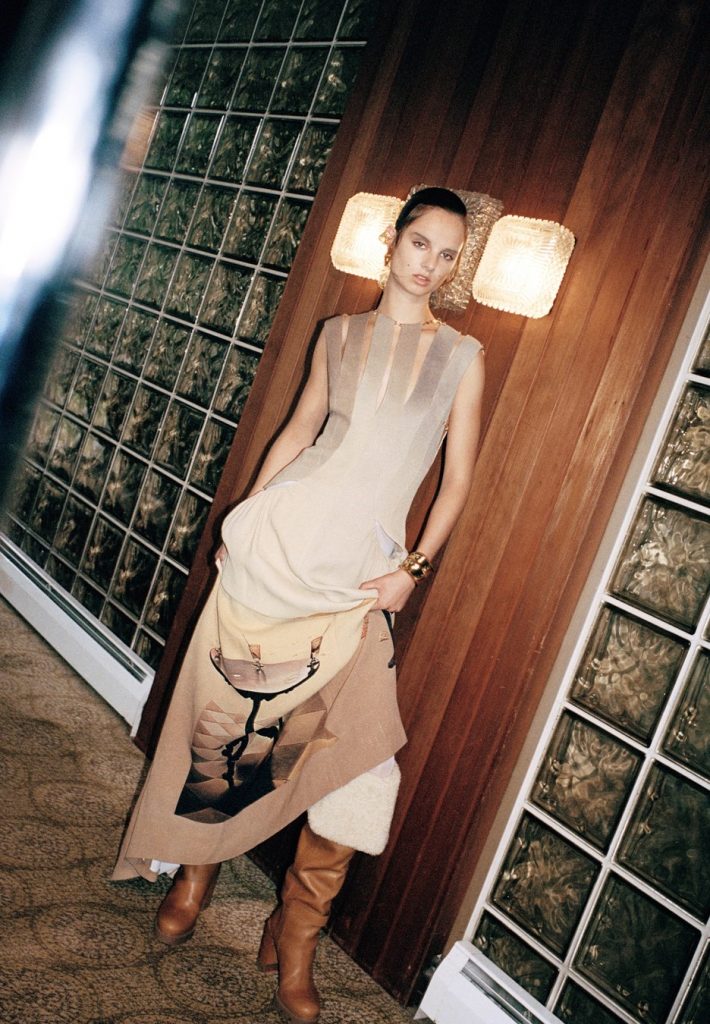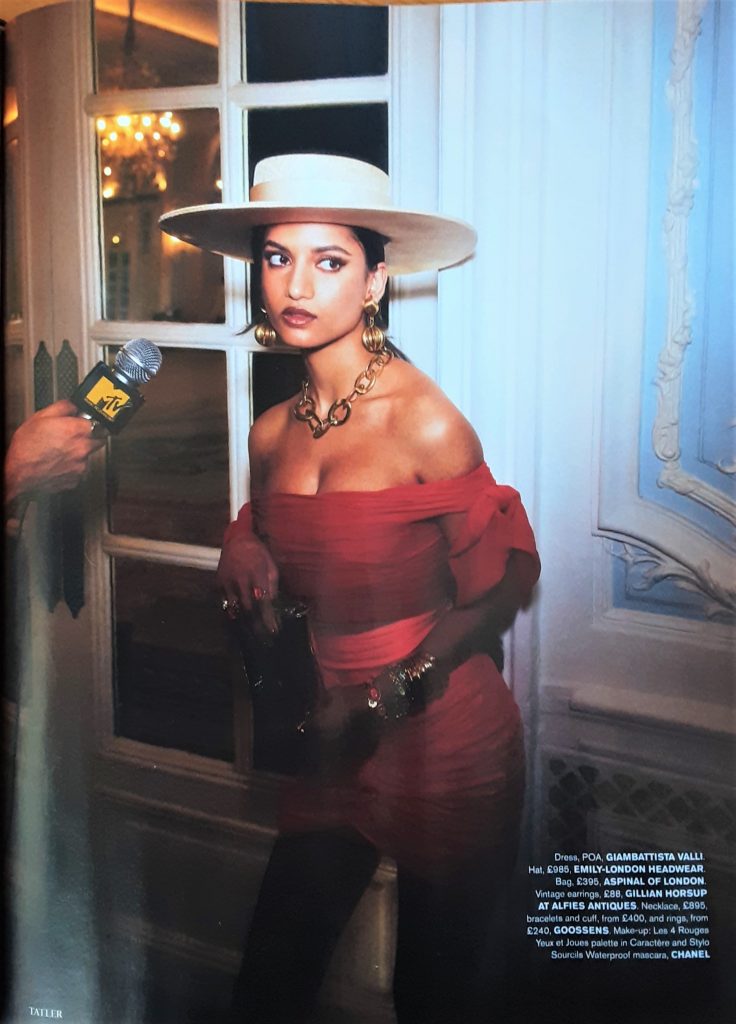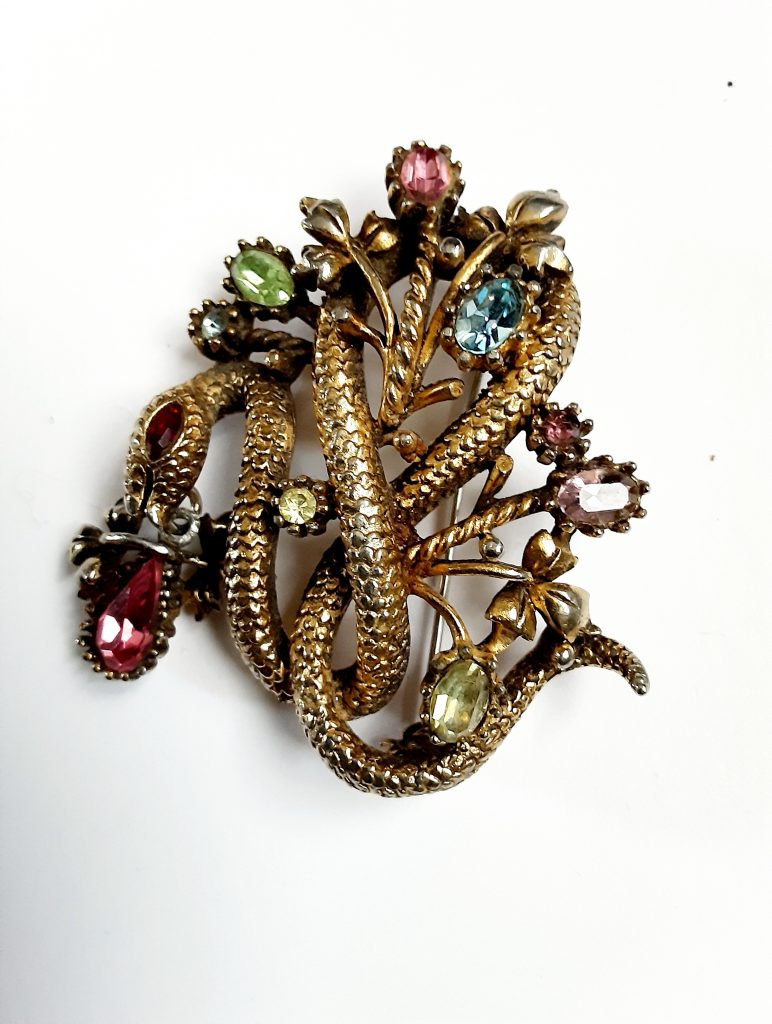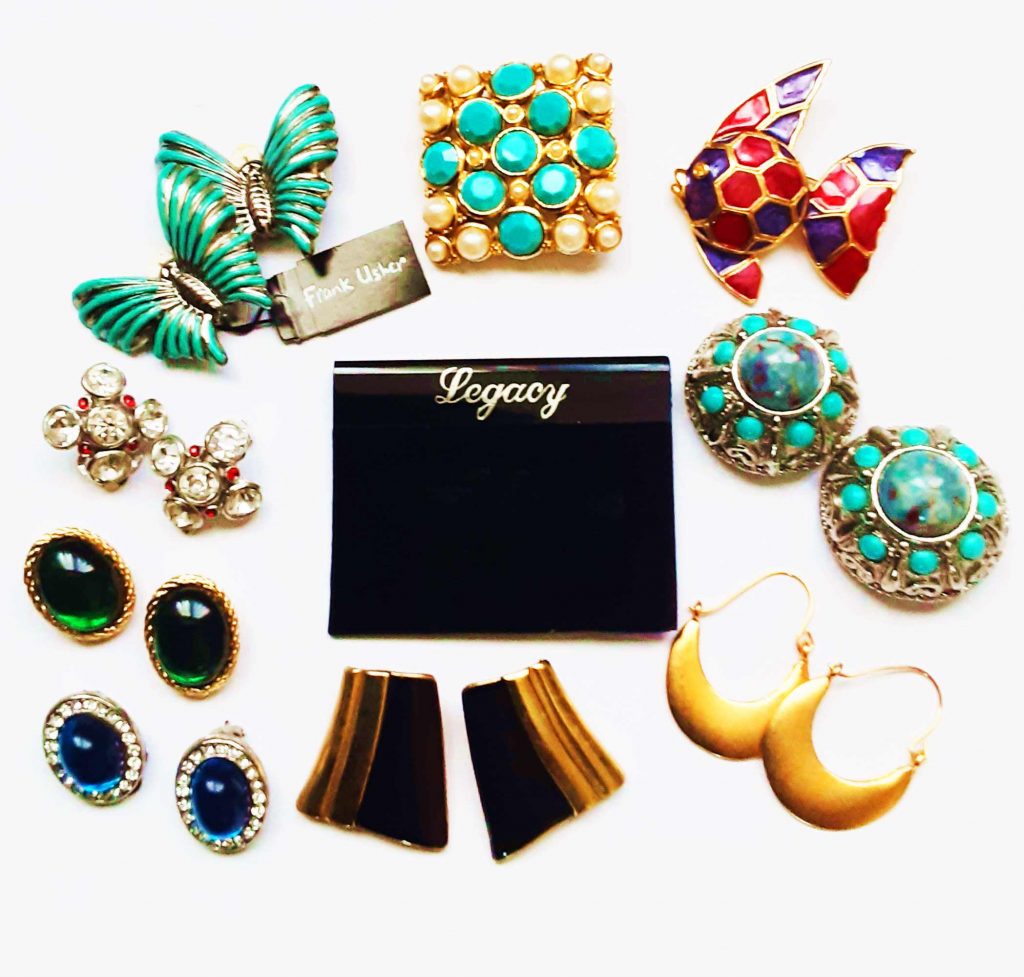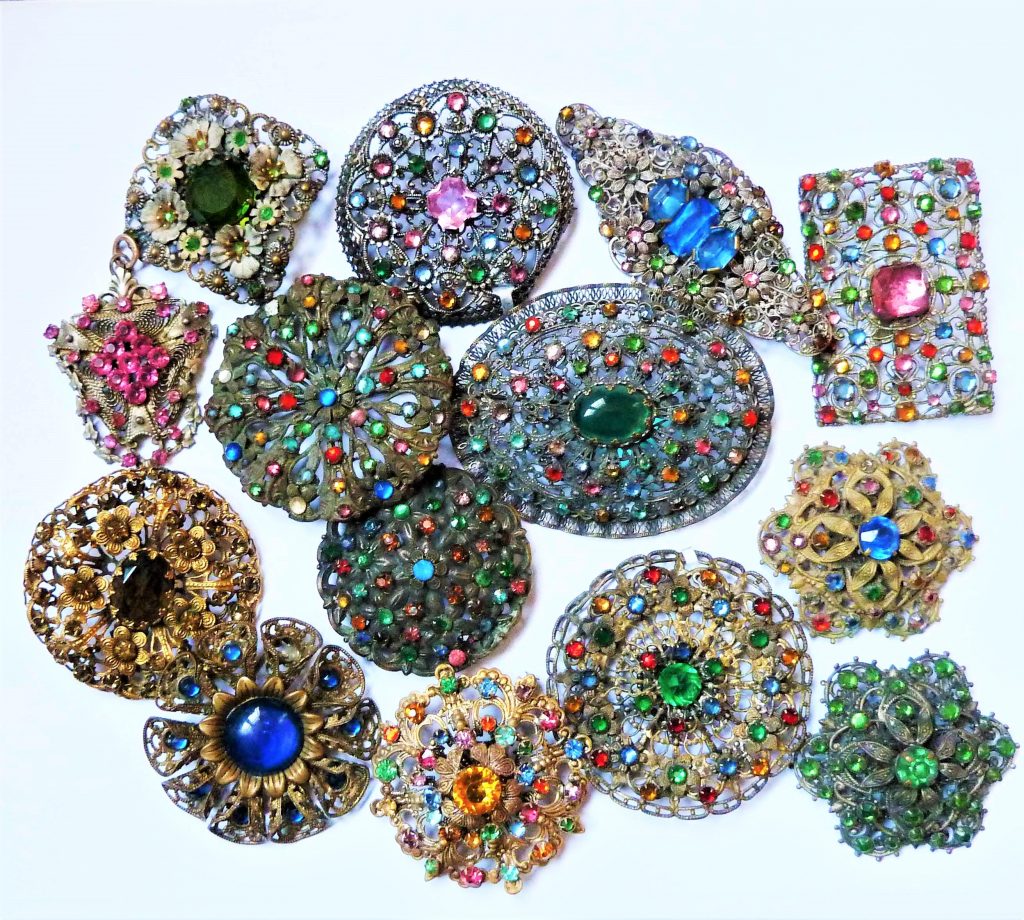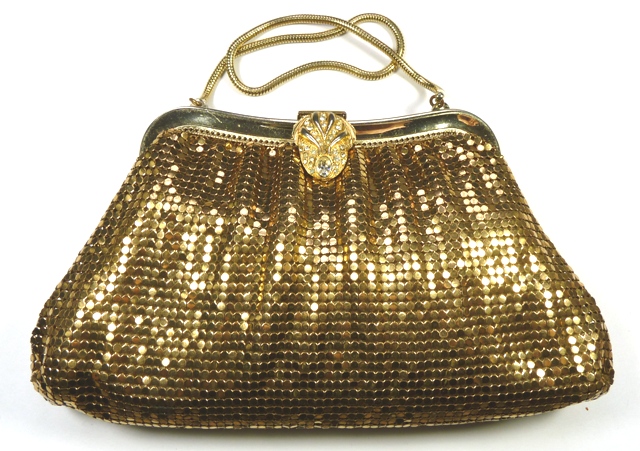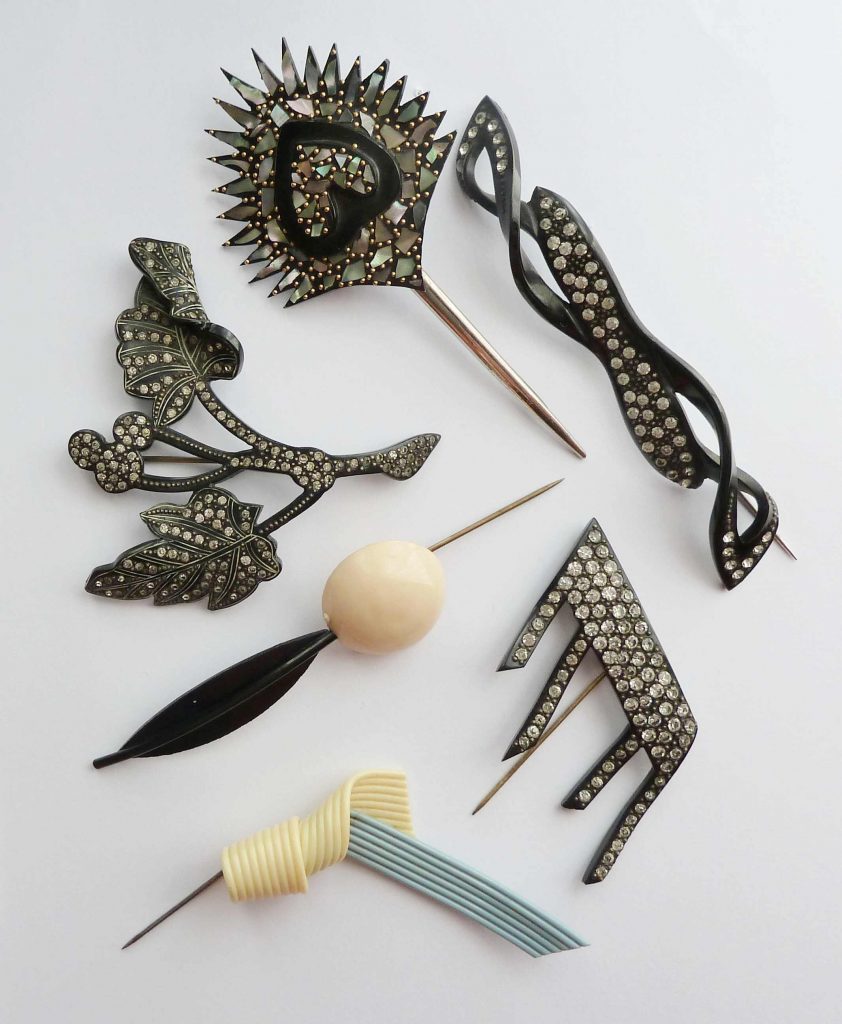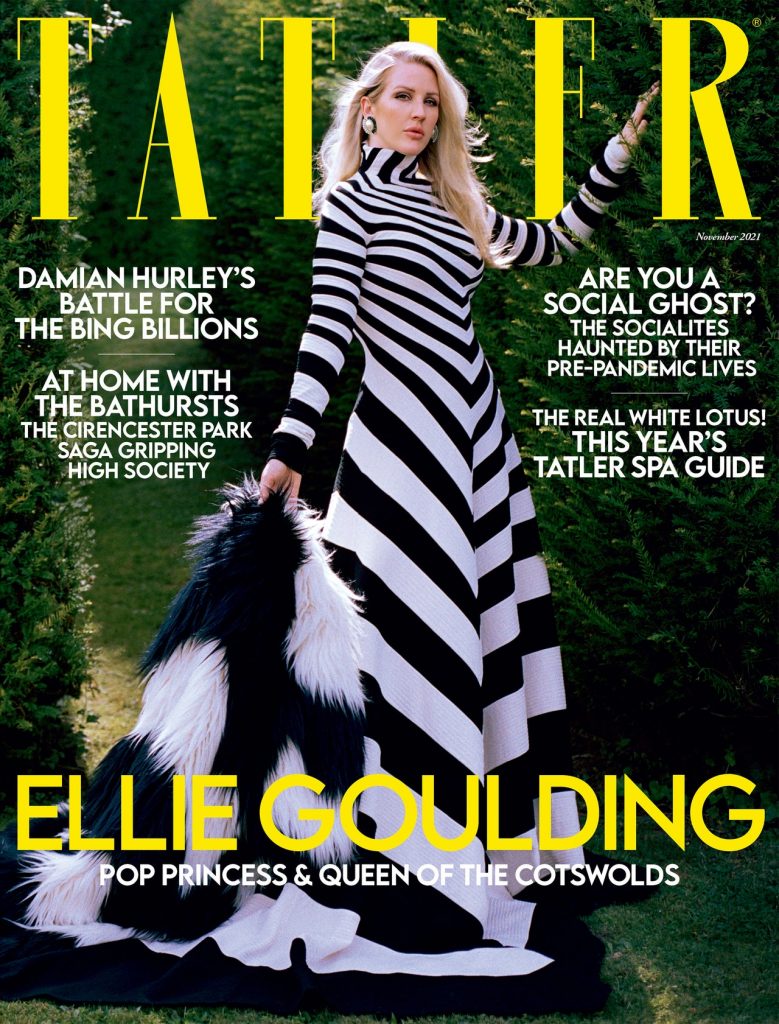Cameos are a raised relief made in stone, shell, glass, etc. and later in plastics. They are the opposite of intaglios – which are recessed images. Cameos have a long history and have been made in ivory, coral, stone, lava, shell, glass, jet etc. Later – in the 20th and 21st century plastics were used. These were not carved of course – but were moulded – usually in two pieces to get two different colours. Classical designs have always been popular – and faces. During the 19th century France and Italy were the leading makers of carved shell cameos. Later so many people visiting Italy would come back with a carved, shell cameo – some better than others! Queen Victoria was fond of them. Later costume jewellery companies such as Whiting and Davis, Avon and of course Wedgewood made them in other materials. In the picture are shell, lava, glass, Wedgewood and plastic cameos. Thanks to the authors – M.L. and P.R Clements for their Schiffer book ‘Cameos Classical to Costume’. I like this book because it includes a complete range of items – rather than just the more expensive, carved variety. I like to see the costume jewellery items!

